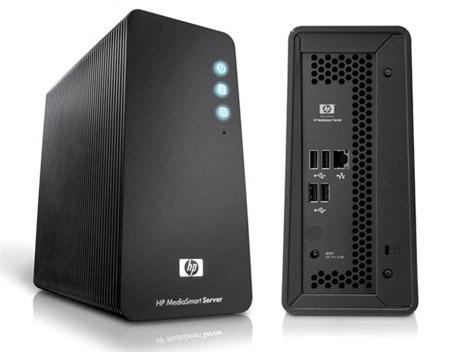Als je een krachtigere homeserver wil die ook nog een stuk meer rekenkracht heeft, goedkoper is, maar toch heel zuinig is dan kan je dit artikel eens lezen:
---------------
G31 And E7200: The Real Low-Power Story
bron:
http://www.tomshardware.c...intel-e7200-g31,2039.html
Components: Core 2 Duo E7200 and G31
Once you accept the fact that powerful graphics, high-end components, and numerous disk drives cannot be part of an efficient low-power computer, you can choose the right foundation for your machine. We went with a mainstream Core 2 Duo E7200processor manufactured using 45 nm technology, which runs on a 1,066 MHz FSB with a 2.53 GHz core speed. Unlike the E8000-series, the E7200 has only 3 MB rather than 6 MB L2 cache. We’re also arming this setup with 4 GB of RAM and a nimble 7,200 RPM hard drive.
We decided to look at two motherboards using Intel’s G31 chipset: Foxconn’s G31MG-S and Gigabyte’s GA-EG31MF-S2. Both are reasonable platforms for our high-efficiency PC project.
---------
31 W Idle Power Requirement
Let us underline that the 31 W idle power figure isn’t far from the figures achieved by a low-power system using an Intel Atom or a VIA Nano processor, where systems typically require between 20 and 35 W, depending on the power supply, chipset memory and hard drive used. The Core 2 Duo E7200, however, provides serious performance when you need it, while the Atom and Nano cannot even beat the performance of a three-year-old PC.
Smart Component Choice Beats Low-Power PCs
The idea of getting an Atom system or one based on VIA’s C7 or Nano processors for your home server or multi-purpose hallway or living room PC sounds very reasonable, as these were designed to consume little power. But these products will fail you as soon as you need more performance. Atom, Nano and others are great solutions for workloads that are fully predictable and controllable, but your everyday work is not. You may want to use a new application, which means the dedicated low power machines will fall flat on their figurative faces. Going for a reasonably-configured high-efficiency PC will cost a bit more, but it will not increase the idle power by much, while providing you with performance reserves that are many times above the level of the low-power options we’ve been testing for the past few weeks here at Tom’s Hardware.
bron:
http://www.tomshardware.c...intel-e7200-g31,2039.html
31 watt is het volledige idle verbruik van het hele systeem dus aan het stopcontact.
En dan zit daar dus nog een 3.5 inch schijf bij en 2 sticks geheugen.
Dit totaalverbruik kan makkelijk nog worden teruggebracht tot vlak boven de 20 watt idle indien men een 2.5 inch schijf, een picopsu en maar 1 van de 2 sticks ram gebruikt!
Een e7200 verbruikt zelf stock 1.6 watt idle
en 20 watt full load met 2 x prime 95
Het is belangrijk om een zuinige chipset te nemen, de G4x en P4x serie gebruikt -in de praktijk- bij de meeste moederbordimplementaties iets van 10 watt meer dan de G3x en P3x series. Toevallig zijn de laatsten ook ouder en goedkoper dus dat komt mooi uit voor een goedkope zuinige en krachtige home server.
Verder kan men ook de e5200 nemen, die is een stuk goedkoper en gemiddeld 15% trager dan de e7200 maar is ook een 45 nm wolfdale. hij gebruikt iets minder dan de e7200 maar dat zal gezien het al heel lage idle verbruik van de e7200 in de praktijk niet merkbaar zijn omdat de overige componenten (vooral het moederbord en de chipset) idle relatief heel veel gebruiken. Een e5200 is voor een homeserver al heel snel.
Dus voor ongeveer 120 euro heb je een zuinig mobo + zuinige processor
Zie ook deze link voor interessante dingen over stroombesparende maar toch krachtige zelfbouw systemen:
http://www.meisterkuehler...gie-stromspar-pc-systeme/
[Reactie gewijzigd door maltesersnoepie op 24 juli 2024 02:44]


/i/1237295229.png?f=fpa)
/i/1251899032.png?f=fpa)
/i/1239723856.png?f=fpa)
:strip_exif()/i/1194268341.jpg?f=fpa)